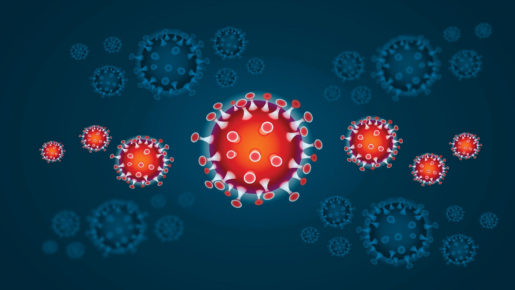By: Dr. Alidad Zadeh
AIAP, virtual meeting, January 27, 2021
The Association of Iranian-American Professionals (AIAP) is an educational non-profit organization located in San Diego, California. During its 25+ years of existence, among other community activities, AIAP has held monthly general meetings inviting professionals, scholars, and experts to speak about a wide range of topics to its members and the public.
What you are reading is an excerpt of the speech given by Dr. Alidad Zadeh, an internal medicine specialist, at a virtual meeting on January 27, 2021. The speech has been edited for readability. For more information about AIAP and to view some slides about this article, please refer to www.aiap.org
——————————————————————————-
The COVID-19 virus is a human and animal pathogen. It has six versions: four of them cause the common cold; two of them cause serious illness (SARS and MERS). In 2019, COVID-19 was found to cause a cluster of pneumonias in Wuhan, China. It has rapidly spread to the entire world, infecting about 100 million people and killing over 2 million.

How Does COVID-19 Spread?
The COVID-19 virus spreads through close contact, from person to person, through airborne transmission. A viral spread can happen even for people near each other, up to approximately 6 feet apart. It can spread by people who are asymptomatic. It can be spread through respiratory droplets (cough, sneeze, etc.) if absorbed through the mucus membranes (nose, mouth, and eyes). COVID-19 is more contagious than influenza (less contagious than the measles).
What IS COVID-19’s Incubation Period?
After COVID-19 transmission, it can take 4-6 days (and up to 14 days) for the infected person to develop symptoms. The illness can last 10 days or longer. The COVID-19 infection period is 8-10 days, but can be longer, and starts 1-3 days before the symptoms develop. After the infection period for 3 days there won’t be any symptoms. That is when the person will be released from isolation.
Testing For COVID-19:
There are currently three main methods to test for COVID-19.
The Molecular Test: A nasal swab is used to diagnose the active infection and is the most accurate. Examples are: NAAT, LAMP, or PCR test.
The Antigen Test: A nasal swab is used to diagnose the active infection. It has the fastest processing time, but is less accurate with false positives in areas with low viral load and false negatives in areas with increased viral load.
The Antibody Test: This blood test is proof of past infection and is less accurate than the other tests.
Clinical Presentation (Symptoms) and Serious Manifestations of COVID-19:
The most common initial presentation of COVID-19 is cough (50%), fever (43%), myalgia (muscle aches or pains) (36%), and headache (34%). Less common presentations include diarrhea (19%), sore throat (20%), and loss of sense of smell and taste (10%).
The most serious cases of COVID-19 include pneumonia (marked by fever, cough, dyspnea [difficult or labored breathing], and CRX B/L infiltrate) and Acute Respiratory Distress Syndrome (ARDS), which is the most common cause of death and the leading cause of respiratory failure.
Other complications of COVID-19 include cardiovascular issues (heart attacks, arrhythmia, and shock), thrombotic events (like DVT, pulmonary embolism, and stroke), neurological issues (such as encephalopathy), inflammations (such as Cytokines release syndrome and Kawasaki disease [mostly in children], and secondary Infections (such as bacterial and fungal infections).
COVID-19 Mortality in the U.S.:
The number of confirmed COVID-19 deaths in the U.S. is more than 400,000 and the excess death rate (the difference between the observed death rate during a particular period of time and the expected death rate during the same period) is about 400,000. According to a USA Today article published on January 21, 2021, the year 2020 was the deadliest year on record for the U.S.
Blood Types and COVID-19:
Human blood types are A, B, AB, and O. According to a study published in the Annals of Internal Medicine on November 24, 2020, patients with blood type O and Rhesus negative have lower risk of COVID-19 infection or severe diseases. Based on a retrospective study of 225,000 patients that tested positive between January 15 and June 30, 2020, those with blood type O had a 2.1% chance of getting the infection (lowest out of all blood groups). Rh- was protective as well. Type B+ had a 4.2% chance of infection (highest out of all blood groups).
Treatments for COVID-19:
Outpatient: Monoclonal antibody decreases hospitalization.
Inpatient: Remdisivir speeds recovery.
Dexamethasone decreases mortality in severely ill patients.
COVID-19 Treatments That May Not Work:
Hydroxychloraquin– RA drug
Convalascent plasma therapy in the severely ill
Lopinavir/Ritonavir– HIV medicine
Tocilizumab- IL-6 inhibitor
COVID-19 Treatments That Show Promise:
Ivermectin and Colchicine
Recovery From COVID-19:
Time to recovery is highly variable. Mild infections take less than 2 weeks while the severe infections might be much longer(2-3 months).
Covid-19 Sequela could include: Fatigue, Shortness of breath, chest pain, cough and cognitive deficit.
COVID-19 Prevention:
These include: Social distancing, wearing masks, hygiene and vaccines.
COVID-19 Vaccines Types:
COVID-19 mRNA vaccine (such as Pfizer-BioNTech and Moderna)
Viral Vector COVID-19 vaccine (such as AstraZeneca)
Vaccine Myths:
The mRNA vaccines will change our DNA; We can get infection from the vaccines; Vaccines can cause infertility; If I already had COVID-19, then I don’t need the vaccine; Researchers rushed the development of the vaccine so its safety and effectiveness cannot be trusted; Getting a COVID-19 vaccine means I can stop wearing my mask; The side effects of COVID-19 vaccines are dangerous; The technology of mRNA vaccine is brand new.These are all myths that have been disproven.
How Do We End This Pandemic?
We need to reach herd immunity. 10% of the U.S population has gotten the infection thus far. We need about 70%-80% of the population to get vaccinated. We need 1.5 million vaccinations daily. Obstacles to this goal are: limited supply, many non-believers in vaccines, and uncertainties in duration of the protection vaccines provide, since vaccines are not 100% effective. Vaccinated individuals can still carry the disease and infect others who are not immune.
Virus Mutation:
There are multiple new strains of the COVID-19 virus. The most concerning as of today are:
The U.K Strain is more contagious (up to 70% more transmissible) and is possibly more deadly (30% higher risk of death- but weak evidence). Pfizer vaccine could still be effective.
The South African Strain is more contagious and might be able to evade antibodies and make the vaccines less effective. The Moderna vaccine still appears to be effective.
The Brazilian strain is similar to the South African strain.
Life After Pandemic:
This shall pass. COVID-19 will most likely never be eradicated. More than likely, COVID-19 can morph into a seasonal disease. As exposure increases, this “novel” (new) coronavirus can become an “endemic” virus similar to the common cold. Moderna is working on booster shots directed at the new variants, which most likely will be ongoing.


















